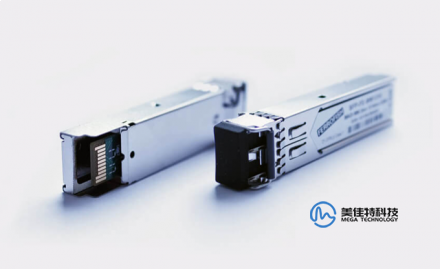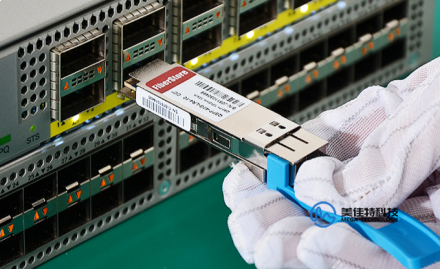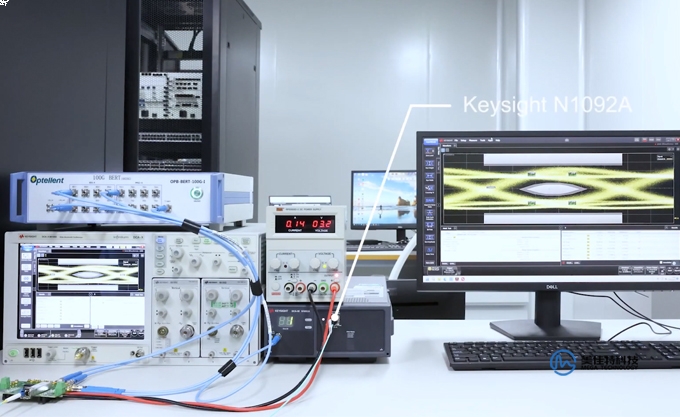FQA
2024.11.15
FQA
What is the difference between SR, LR, LRM, ER and ZR in 10G optical modules?
2024.07.09
SR, LR, LRM, ER and ZR are the more common module types in the 10GIEEE standard, but what is the difference between 10g SR, LR, LRM, ER and ZR? First we need to know what they represent. In fiber optic communication, SR, LR, LRM, ER and ZR are a kind of distance terminology in 10G optical module transmission, SR means short distance, LR means long distance, LRM means length extended multipoint mode, ER means ultra-long distance, and ZR means the longest distance.




FQA

17
2022-11
Fiber Optic Knowledge | The history and characteristics of fiber optic communication
Theoretically speaking, an optical fiber can simultaneously transmit 10 billion voice paths, and the current test of simultaneous transmission of 500,000 voice paths has been successful, thousands or even hundreds of thousands of times higher than the traditional coaxial cable, microwave, etc.. Optical fiber has a very low attenuation coefficient, with the appropriate optical transmission, optical receiving equipment, optical amplifiers, forward error correction and RZ code modulation technology, etc., can make its relay distance of thousands of kilometers or more, while the traditional cable can only transmit 1.5km, microwave 50km, simply can not be compared with it.
FQA

17
2022-11
Fiber Optic Knowledge | Optical Fiber Introduction
Fiber optics, the science of transmitting data, voice and images by means of light through thin, transparent optical fibers. In the field of telecommunications, fiber optic technology has practically replaced copper wires in long distance telephone lines, which are used to connect computers in local area networks. Fiber optics is also the basis for fiber optic endoscopes used to examine the inside of the body (endoscopy) or to examine the inside of manufactured structural products.
FQA

17
2022-11
Optical Module Knowledge | What are the main causes of optical module failure and protective measures?
Optical modules must have a standardized operation method in the application, and any irregular action may cause hidden damage or permanent failure. The main causes of optical module failure are deterioration of optical module performance due to ESD damage, and optical link failure due to optical port contamination and damage.
FQA

17
2022-11
Optical Module Knowledge | How to read the naming of optical modules?
光模块知识 | 如何看懂光模块的命名?了解光模块命名规则就能读懂厂商光模块产品名称所包含的全部信息。本文以通用的命名规则进行分解说明。
FQA

17
2022-11
Optical Module Knowledge | What are the common types of optical modules?
Optical Module Knowledge | What are the common types of optical modules? In order to meet the demand of various transmission rates, different rates of optical modules are produced: 400GE optical module, 100GE optical module, 40GE optical module, 25GE optical module, 10GE optical module, GE optical module, FE optical module, etc.
FQA

16
2022-11
Optical Module Knowledge | What are the key performance indicators of optical modules?
How do you measure the performance metrics of an optical module? We can read the performance index of optical module from the following aspects. The average transmit optical power is the optical power output from the light source at the transmitting end of the optical module under normal operating conditions, which can be understood as the intensity of light. The transmitting optical power is related to the proportion of "1" in the transmitted data signal, the more "1", the higher the optical power. When the transmitter sends a pseudo-random sequence of signals, "1" and "0" accounted for roughly half of each, when the test power is the average transmitted optical power, the unit is W or mW or dBm.
FQA

16
2022-11
Optical Module Knowledge | What is an optical module? How optical modules work
What is an optical module? Optical module (optical module) consists of optoelectronics, functional circuit and optical interface, etc. The optoelectronics include two parts: transmitting and receiving. -Megatron Technology
FQA

27
2022-10
What is an oscilloscope? How much do you know about oscilloscopes?
Modern electronic oscilloscope technology is ubiquitous in our daily lives. Millions of people use electronics every day in a wide range of applications, including general electronic testing, industrial automation, automotive, university research labs, and the aerospace/defense industry, which are working faster and faster as electronics technology advances. Today, most electronic products use high-speed digital technology.
FQA

19
2022-10
VNA Master Anritsu Handheld Spectrum Analyzer
The VNA Master™ MS202xB/3xB series of handheld multifunction instruments includes a handheld, powerful vector network analyzer that allows you to perform S-parameter analysis anywhere, anytime. The MS203xB series also includes a high-performance spectrum analyzer with an industry-leading ultra-low noise floor. Based on Anritsu's 9th generation instrumentation platform, the VNA Master provides unmatched measurement breadth, depth and accuracy, reducing the number of test instruments needed when analyzing modern communications systems in the field, on a tower, on a route or in a vehicle.








